The Secret History of Hyderabad State of the Nizam (South India; 1724 – 1948)
Last Updated on July 15, 2021 by Hamad Subani
The Founding of Hyderabad State
The Death of Asif Jah I and French Intervention in the Hyderabad State

Asif Jah I peacefully passed away in the Deccan town of Burhanpur on 1st June 1748. He would be buried in the Deccan town of Khuldabad, in the vicinity of Aurangzeb’s grave. With two of his sons, Feroz Jung II and Nasir Jang being possible “Illuminati candidates,” a full-blown succession crisis was immediately underway for the office of the “Nizam of Hyderabad.” Ironically, the succession turned against the “Illuminati candidates” thanks to French intervention. Unlike the British who had tarnished their reputation by rapacious acts of piracy, the French had some respect in India. As I have earlier mentioned, all European interests were compromised by the Illuminati, and were secretly working together for the eventual British domination of India. This becomes further evident when we later notice the French suspiciously abandoning Tipu Sultan to his British enemies. But in this early stage of French colonization, the hardcore-Catholic French Governor General Dupleix was an exception. He began damaging British interests in South India so badly that the European Illuminati began to take note. He was involved in capturing the British port of Madras in 1746 and turning it into a French port. Bertrand-François Mahé, the French Governor of Reunion made several attempts to sabotage the operations of Dupleix in South India by repeatedly lodging inaccurate complaints about him to the French establishment. But Dupleix left behind a successor, Marquis de Bussy who was married to the youngest step-daughter of Dupleix. And Marquis de Bussy would continue the strategy of Dupleix, of using Hyderabad State to thwart the British and the Chitpavani Peshwas. This would anger Bertrand-François Mahé so much that he returned to France to launch a court case against Dupleix. When Dupleix would retire, the French government refused to support him and he died in penury.

The strategic Carnatic (Not to be confused with Karnataka) on the south-eastern coast of India was a Mughal province since Aurangzeb had conquered it. Appointments to the office of the Nawab of Carnatic were decided by the Mughal Emperor. But with the waning authority of the Mughals, Asif Jah I had propped a claimant for the office of the Nawab of Carnatic. Realising the strategic importance of the area, Dupleix also propped a claimant by the name of Chanda Saheb. When Asif Jah I passed away in 1748, the hated and infamous Nasir Jang had already styled himself as a Crown Prince and the Powers That Be seemed to have designated him for succession. Feroz Jung II (who shared a common mother with Nasir Jang) seemed to be totally in agreement and was so confident of the smooth succession of Nasir Jang that he never even bothered to leave Delhi to sort things out. But another claimant named Muzaffar Jang stepped forward. He was the son of a daughter of Asif Jah I, and since Asif Jah I adored him, some considered him to be a Crown Prince. Dupleix saw this a great opportunity to intervene in Hyderabad State. He and Chanda Saheb joined forces with Muzaffar Jang, who was desperate for support. The British clearly supported Nasir Jang by sending 600 British soldiers led by Major Lawrence,[1]J.D.B. Gribble, History of the Deccan (New Delhi: Rupa & Co. 2009) 21. further confirming that he was the Illuminati candidate. Nasir Jung led a massive army of 300,000, complete with Maratha scouting cavalries. The two headed for a showdown in the Carnatic, where Nasir Jang holed up in the impregnable fortress-complex of Jinji. This was the most insurmountable fort of India. It had taken Aurangzeb 12 years to conquer it. Both Chanda Saheb and many French soldiers left for the French fort of Pondicherry fearing that they would be routed. But Muzaffar Jang persisted, partly encouraged because he had started receiving peace overtures from Nasir Jang. Further, Nasir Jang swore on the Quran that he would not harm or imprison Muzaffar Jang, neither deprive him of the benefits he enjoyed during the life of Asif Jah I.[2]J.D.B. Gribble, History of the Deccan (New Delhi: Rupa & Co. 2009) 22. But once Muzaffar Jang entered Nasir Jang’s camp to negotiate, he was chained and imprisoned, and his army was attacked.[3]J.D.B. Gribble, History of the Deccan (New Delhi: Rupa & Co. 2009) 23. The Maratha allies of Nasir Jang would chase Dupleix and his Frenchmen all the way to Pondicherry.

But Dupleix did not give up. He had his ear to the ground, and soon became aware of increasing discontent Nasir Jang faced within his own ranks over the breach of faith, especially among Hyderabadi commanders who had brokered the peace deal. He immediately opened up secret correspondence with the Nawabs of Cuddapah and Kurnool, who were prominent among the discontented. They also happened to be battle hardened fighters of Afghan origin. He also opened up correspondence with Nasir Jang, requesting leniency for Muzaffar Jang. By then Nasir Jang had left Jinji and the British had also left. Dupleix had a small force of Frenchmen and sepoys led by de Bussy storm Jinji at night in a surprise attack. By morning, the confused garrison of Nasir Jang had surrendered. Nasir Jang marched back but the rainy season bogged him down. And Dupleix began making overtures for peace, confusing him. Nasir Jang finally agreed for peace with Dupleix, and Dupleix sent the treaty papers to be ratified. At the same time, Dupleix ordered his force to leave Jinji and proceed to face Nasir Jang’s army. If the Nawabs of Cuddapah and Kurnool failed to execute their part of the conspiracy, Dupleix would pretend he came to meet Nasir Jang to have the treaty ratified. When Dupleix arrived, the armies of the Nawabs of Cuddapah and Kurnool were there. The Nawab of Cuddapah was in the lead on an elephant with a white flag (as was planned by Dupleix).[4]J.D.B. Gribble, History of the Deccan (New Delhi: Rupa & Co. 2009) 26. The bewildered Nasir Jang rode his elephant right up to the Nawab of Cuddapah and asked why he was not confronting the French and instead waving a white flag at them. The Nawab, now close beside Nasir Jang, pulled out a gun and shot him dead. The army of Nasir Jang was already grumbling over his breach of faith, and welcomed Muzaffar Jang as their new Nizam. He had always been more beloved to them. Nasir Jung would be buried at Khuldabad, where his father and Aurangzeb were also buried.
Dupleix emerged as a kingmaker, and now, a force of 300 Europeans led by de Bussy and 2000 French-trained sepoys would become the personal guard of Muzaffar Jang.[5]J.D.B. Gribble, History of the Deccan (New Delhi: Rupa & Co. 2009) 28. They all proceeded to Hyderabad. But Muzaffar Jang would never reach Hyderabad. While passing through the territories of the Nawab of Cuddapah, some locals attacked the ladies caravan of the Nizam’s Army.[6]J.D.B. Gribble, History of the Deccan (New Delhi: Rupa & Co. 2009) 29. The Nawab of Cuddapah once again showed up and started arguing on behalf of his subjects with Muzaffar Jang. De Bussy allegedly settled the quarrel and the caravan started to proceed once again.[7]J.D.B. Gribble, History of the Deccan (New Delhi: Rupa & Co. 2009) 29. But the Nawab of Kurnool hit Muzaffar Jang with a spear, killing him. Both the Nawab of Kurnool and the Nawab of Savanoor were also killed in the ensuing melee, while the Nawab of Cuddapah escaped.[8]J.D.B. Gribble, History of the Deccan (New Delhi: Rupa & Co. 2009) 29. De Bussy immediately installed Salabat Jang (third son of Asif Jah I from Umda Begum) as the new Nizam.[9]J.D.B. Gribble, History of the Deccan (New Delhi: Rupa & Co. 2009) 29. He was originally accompanying the retinue of his brother Nasir Jang, who always kept him nearby in “honorary confinement” so that he could not participate in the succession struggle.
The whole incident reeks of a counter-conspiracy, attempting to reverse the gains Dupleix had made, using the very means he had used to achieve them. My guess is that either the British or the Safdarjung-Feroze Jung II alliance was involved. But as fate would have it, instead of confusion, chaos and war, a more viable candidate became the Nizam.

Unlike Nasir Jang and Feroze Jung II, Salabat Jung came from a different mother. And so, the Office of the Nizam passed to a non-Illuminati candidate in 1751. This provoked an immediate response from the Illuminati conspirators in Delhi. Feroz Jung II, who had earlier seemed content with the succession of Nasir Jang, suddenly obtained a decree from the Emperor proclaiming himself Viceroy of the Deccan. He then entered into an alliance with the Chitpavani Peshwas. He promised them the entire province of Khandesh and 500,000 Rupees in exchange for military support. With a massive Mughal force of 150,000,[10]J.D.B. Gribble, History of the Deccan (New Delhi: Rupa & Co. 2009) 32. he reached the Deccan in October 1752. And the Chitpavani Peshwa Balaji Baji Rao set out from his capital of Pune with a force of 100,000 to join him.[11]J.D.B. Gribble, History of the Deccan (New Delhi: Rupa & Co. 2009) 32. To prevent these forces from meeting up, de Bussy marched on Pune with his European soldiers and sepoys from the Nizam’s army. The Peshwa hastily retreated and sent a force of 40,000 to combat de Bussy. The two would meet near Bidar, and de Bussy’s artillery made the Marathas scamper away. De Bussy then conducted a night attack when the Maratha force was engaged in worship during a lunar eclipse, and got away with a substantial plunder.[12]J.D.B. Gribble, History of the Deccan (New Delhi: Rupa & Co. 2009) 32. The Marathas finally gave up their plans to rendezvous with Feroze Jang II, who then ended up being poisoned by Umda Begum, the mother of Salabat Jang. And so, the Illuminati would temporarily lose control of Hyderabad State.
The Rise of Feroze Jang III in the Mughal Court

Feroze Jang III, the son and successor of Feroze Jung II was even more sanguine than his father. And it seems that Safdarjung had groomed him from the very beginning like a godfather. He became so powerful that even Mughal Emperor Ahmed Shah feared him. He would reinstate Safdarjung as the vizier, even though Safdarjung had been deposed and had retired to Awadh. Like his father, he too entered into an alliance with the Chitpavani Peshwa Balaji Baji Rao. And the two went to work along with the secret assistance of Safdarjung, conspiring to obliterate the Mughals. This time, it had been decided that Vishwasrao, the son of the Chitpavani Peshwa Balaji Baji Rao would be placed on the throne of Delhi after Ahmed Shah was deposed. When Emperor Ahmed Shah discovered the plot, He sought the assistance of Madhosingh (the brother and successor of the Rajput Jai Singh II of Amber/Jaipur) and the Jat chief Suraj Mal. Suraj Mal had refused to pay taxes to the Peshwas, and the forces of the Peshwa had thus surounded his fort in Kumher. This was done in connivance with Feroze Jang III.
Suraj Mal came up with a brilliant plan soon after he assassinated the Maratha chief who had laid siege to his fort . He advised the Emperor to move towards Sikandarabad, under the excuse of participating in a hunting expedition. There, he would be joined by the by the Jats led by Suraj Mal, the Rohillas and the Mughal forces. From there, they would proceed to Agra, where the Emperor would be joined by their historical Rajput allies from Jaipur and Jodhpur. The only flaw in the plan was that Ahmed Shah once again made the mistake of trusting Safdarjung and allowed him to command the Mughal forces at Sikandarabad. Safdarjung immediately leaked the plan to Feroze Jang III and the the Chitpavani Peshwa Balaji Baji Rao. Before the plan could come to fruition, Feroze Jang III and the Marathas routed the Mughals at Sikandarabad in 1754. The Empreror and his family fled to Delhi. Safdarjung was spared and comfortably retired to his estate in Awadh. When rumours of his treachery started circulating, he would fake his death and disappeared from public life at the age of 46. There is strong reason to believe he lived for much long, an continued to plot against the Mughals through his son and successor Shuja ud-Daula, who played an important role in the emergence of British dominance in India. Feroze Jang III made peace with the Jats, and descended upon Delhi along with the Marathas. Feroze Jang III had already groomed the son of Jahandar Shah, Alamgir II, as a potential puppet. Like the Sayyid Brothers, Feroze Jang III would blind Emperor Ahmed Shah and later kill him. Alamgir II would be placed on the throne on 2nd June 1754.
When rumours of the treachery of Safdarjung started circulating, he would fake his death and disappeared from public life at the age of 46. There is strong reason to believe he lived for much long, an continued to plot against the Mughals through his son and successor Shuja ud-Daula.
But Alamgir II slowly started resisting Feroze Jang III. This was made possible by Abdali’s invasion of North India, during which he briefly occupied Delhi, and made the Rohilla Najib ud-Daula as the vizier. In the same year, Alamgir II made peace with Ahmed Shah Abdali, and even had his daughter married to the son of Abdali. Ahmed Shah Abdali would marry the daughter of Muhammad Shah in the same year. This development alarmed Feroze Jang III and the Peshwa Balaji Baji Rao. Instead of seeing their plans of putting a quick end to the Mughals being realised, they watched in horror as the Mughals were granted a new lease of life by their new allies, the Durranis and the Rohillas. As soon as Abdali left, Peshwa Balaji Baji Rao immediately dispatched a force of 30,000 to retake Delhi. Feroze Jang III quickly deserted the Mughals to join the Marathas. After two weeks of fighting, the Mughals capitulated. Najib ud-Daula was spared and allowed to leave for Rohilkhand under the condition that he would not fight the Marathas again. The Marathas and Feroze Jang III were now in complete control of Delhi, and the Marathas sacked the already depopulated city. They decided to quickly put their plan of eliminating the Mughal line into action. Soon there were proposals to put Vishwasrao, the son of the Chitpavani Peshwa Balaji Baji Rao on the throne of Delhi. And all other Mughal princes and notable family members were arrested. But crown prince Shah Alam II made a daring escape and headed to Bengal. Fearing that Alamgir II would proclaim him Emperor, it was decided that Alamgir II had to be murdered. In November 1759, Alamgir II was told that a pious man had come to meet him. Being deeply religious himself and never missing a single congregational prayer, he set out on foot towards the courtyard, only to be stabbed by assassins. The Maratha commander Sadashiv Rao Bhau and Feroze Jang III were clearly involved in the assassination. In place of Alamgir II, they placed another prince Shah Jahan III as puppet on the throne.
Shah Alam II surfaced in Bengal, and soon attracted a wildly popular following. Feroze Jang III and the British appointed Nawab of Bengal Mir Jafar soon advanced to Patna to eliminate him. This was the first instance of overt military collaboration between Illuminati elements in the Mughals, the Marathas and the British. Soon, Shah Alam II became a danger to the British and their newly established foothold in Bengal, and he was soon fighting pitched battles against them. And his battles were soon obtaining a populist character. The conspirators had also underestimated how much the Sufi Alamgir II had come to be loved in his brief five year reign, and how his murder had made the Marathas the object of public wrath. Soon enough, the Rohilla Najib ud-Daula had gathered a large Mughal Army outside Delhi, and joined by a large crowd of supporters, deposed Shahjahan III. This would have the effect of Shah Alam II, still in Bengal, becoming the defacto Emperor. Feroze Jang III, along with the Marathas fled Delhi. He then disappeared, although it seems he continued to write poetry under the pen-name of Nizam. There is indication that he spent time with the British, who had now established themselves at Surat. It is likely that he continued to play a major role as a strategist in the behind-the-scenes intrigues that brought the British to power. It is also believed that he masterminded the secret intrigues that later led to the downfall of of the Nizam Salabat Jang.
The Third Battle of Panipat and the Destruction of the Maratha Empire

Soon Ahmed Shah Abdali returned once again, and along with the Rohillas, assembled an army of 100,000. The Nawab of Awadh Shuja ud-Daula who was until now openly supporting the Marathas suddenly realized that he stood to be crushed, and that he could do a better job by sabotaging Mughal forces from within by joining Abdali. However, he found himself outnumbered by several more sincere commanders, and this greatly diminished his potential for conspiracy. The Chitpavani Peshwas assembled an army of 70,000 (along with 70,000 non-combatants) and reached Delhi on 1st August 1760, which immediately fell to them. They then moved to the town of Panipat in the Punjab, next to the historic plains of Panipat. This was the same plain where Babur, the founder of the Mughal Empire defeated the Lodhi dynasty, founding to the Mughal Empire. Why choose the plains of Panipat, which was completely unsuited for the guerilla warfare the Marathas were good at? Maybe the Powers that Be had become so confident in the abilities of the Nawabs of Awadh to turn Mughal victories into routs that they sought to make a symbolic statement, ending the Mughal Empire where it first began two centuries ago. Apart from the guaranteed secret support of the Nawab of Awadh, there was another reason why a Maratha victory was very likely. The Maratha army was now considerably modernized by secret assistance from European powers. European small arms and light artillery had been adopted. European mercenaries were also lending their services against the Mughals. One such “mercenary” was Le Corbosier, an expert in explosives. The Marathas also tried their best to court de Bussy when his relations with Salabat Jung soured. Although he refused to relinquish his loyalty to Salabat Jung, the Marathas were able to win one of his well trained artillery units consisting of 10,000 French-trained sepoys. The commander of this unit was a mysterious Deccan noble named Ibrahim Khan Gardi.
The biggest disadvantage the Marathas faced was their lack of allies. Even the Sikhs and the Jats, two groups in active conflict with the Mughals, refused to ally with the Marathas because of their extortionate practice of collecting chauth. To quote,
[Chouth] was a species of blackmail levied by the Marathas in all districts over which they could gain any influence. It consisted of 25% of the revenue, and if this was not paid, the Marathas sent a force to harry and raid the district in question, so that it was only by regular payment of this tax that the villagers could count upon safety from ravage or plunder. In return however, the Marathas agreed to protect such districts from any other robbers.[13]J.D.B. Gribble, History of the Deccan (New Delhi: Rupa & Co. 2009) 66.
The Marathas had also disadvantaged themselves by including a very large number of commoners who obviously could not take part in combat. But yet, they became a big liability when food supply was running out in the besieged town of Panipat. According to historians, these commoners were Hindu pilgrims who were merely seeking safety. However Hindu pilgrimage sites are nowhere near Panipat. And the Jat chief Suraj Mal had suggested that it was in Maratha best interests to leave these commoners at Agra. It is more likely that the shrewd Peshwa sought to use these commoners when the victorious Marathas returned to Delhi, and installed Vishwasrao as the new Emperor of the Subcontinent. They dragged them all the way from Maratha lands because the non-Muslims of North India were not exactly supportive of the Marathas. This would make the destruction of the Mughal line appear like a populist cause, rather than a long-drawn conspiracy. Regardless of their motives, the atrocities committed against these commoners cannot be justified.
The two forces were camped on either side of the Yamuna river and were soon skirmishing. But Ahmed Shah Abdali then made a move that defies all conventional military wisdom. He had his entire force wade across the river at once on 25 October 1760 at Baghpat. They cut off the Maratha supply line from Delhi. They then encircled the town of Panipat where the Marathas had garrisoned and by the end of November 1760, they had managed to cut all food supplies. Forced by the prospect of starvation, the Marathas even sued for peace, but Najib ud-Daula prevented Abdali from such a consideration on religious grounds. The Marathas then intended to move in a defensive formation back to Delhi by breaking the siege. On 14th January 1761, the main battle would begin during one such massive attempt. There are indications that the Nawab of Awadh Shuja ud-Daula was coordinating with the Marathas. On one occasion, the Maratha commander Sadashivrao Bhau suddenly led a charge on Durrani forces towards the left, commanded by the vizier Shah Wali Khan. The idea was to split the Durrani forces into two groups. He almost accomplished that when Shuja ud-Daula, whose forces were next to Shah Wali Khan, refused Shah Wali Khan’s request for support. But the evening sunlight happened to shine directly into the eyes of the Maratha horses, disorienting them. Najib ud-Daula was also targeted for assassination in one Maratha attack but survived. Abdali soon had his camel-mounted swivel cannons fire at the Marathas. Because of their height, these canons could fire above the heads of the Durrani forces, whereas the Maratha artillery could not respond with their troops in the firing line. Abdali also called up armoured reserve units, who were assigned the sole task of preventing the left and right flanks from being split from his main group. Ibrahim Khan Gardi had advised Sadashivrao Bhau that his artillery unit had to be protected from all sides so that they could fire without being assaulted. But during the course of battle, the Marathas assigned with protecting his artillery unit failed to do so, allowing Rohilla riflemen to shoot down the Gardis one by one. Soon, Vishwasrao, the proposed future Emperor of India succumbed to a bullet wound and died. Sadashivrao Bhau had to step down from his elephant. Rumours spread that he too had been killed, and the Marathas started deserting, resulting in a complete rout. As they tried to flee, locals who were already fed up by their incessant raiding did not hesitate to attack them. The body of Sadashivrao Bhau, who had died fighting, was for some reason, identified by Kashiraj Pandit, the diwan of Shuja ud-Daula the next day. After his artillery unit was routed, Ibrahim Khan Gardi was secretly given refuge in the camp of Shuja ud-Daula. Ibrahim Khan Gardi would perform the last rites on the bodies of Sadashivrao Bhau and Vishwasrao and have them cremated, presumably to prevent them from being desecrated (One Afghan soldier had already ran off with the head of Sadashivrao Bhau, but it was recovered). The Rohillas managed to find Ibrahim Khan Gardi, and tortured and killed him.
Following the Third Battle of Panipat, there were attempts by Maratha Generals to unseat the Chitpavani Peshwas through assassination. But the Peshwas wrestled control and managed to preside over what remained of the crumbling confederacy.
Shah Waliullah’s little known role in the Third Battle of Panipat
It is only of recent that the rise of the Chitpavani Peshwas is being re-evaluated by conspiracy theorists as a hostile takeover of the genuine bloodline of Shivaji. Orientalists and Establishment historians always sought to blend in the Peshwas as being more Maratha than the actual bloodline of Shivaji. Their role was always portrayed as a godsend to the Maratha cause, although it is more likely that had Tarabai and her successors triumphed, they would have sought peace/collaboration with the Mughals, the Rajputs, Tipu Sultan and Asif Jah I in the face of the British threat. Being non-Jewish, it is unlikely that they were blindsided by an irrational hatred of Political Islam. It is unlikely that they would be willing to become tools for the Illuminati conquest of the Subcontinent. The Chitpavani Peshwas on the other hand, would turn the Marathas into a tool of destruction, hurling them at the last vestiges of Mughal India, namely the Mughal court at Delhi, the Rajputs and Asif Jah I. The groundwork for British takeover of the entire Indian Subcontinent was being accomplished by using Marathas to weaken the biggest opposition groups the British would face, well in advance of British consolidation. Of course, the Maratha people were neither exempt from being colonized by the British in the long run. When the British started their takeover, large Maratha groups would strangely implode and self-destruct when they showed up to fight the British. It was as if the British had inside information on their strengths and formations. On the other hand, Maratha leaders connected to the Peshwas were given fairly liberal treatment by the British, and were often rehabilitated on good terms in their “princely states.” Without access to modern-day conspiracy literature, how could Shah Waliullah detect the anomalous origins of the Peshwas? Genuine Saints are known to have “spiritual radars,” which can lock in on sources of intrigue and darkness.
Shah Waliullah authored more than 50 works on Islamic theology. However, none contained any hints about the turmoil then engulfing the Subcontinent. This was because he was already leading a secret political life, corresponding with Muslim nobles and intellectuals through private letters. He preferred to be secretive about this because he hated creating rifts and differences within the Muslim community. Some of these letters have come to light, and indicate that Shah Waliullah was very tearful about the plight of the common citizenry of Delhi, both Muslims and non-Muslims. To quote him in a private letter to the Rohilla Najib ud-Daula,
When the royal forces traverse the city of Delhi, full care should be taken that no wrong or ill-treatment is done to the city as has been the fashion earlier. The people of Delhi have several times faced plunders of their wealth and property as well as dishonour and disgrace, that is why the realization of royal objectives has been delayed. After all, the sigh of the oppressed has its effects. This time if you want that the delayed works are done you should strictly prohibit that no one is to tease or offend the Muslims and the dhimmis [protected non-Muslims] of Delhi.[14]Mehmood A. Ghazi, “Political Letters of Shah Wali Allah – A Critical Review,” Journal of the Pakistan Historical Society 30 (1982) 90-91.
He was in active correspondence with Najib ud-Daula, Ahmed Shah Abdali and Asif Jah I. And from the contents of the letters, it appears that all three of them revered him as a saint. In many of the letters, he gives strategic advice, along with requests and suggestions, which he would not be making unless all three of them duely followed his directions. It is no surprise that all three of these men also happened to represent the biggest obstacles to the Illuminati conquest of India.
He sensed a dreaded darkness moving over the Subcontinent. Of course, there was no way Shah Waliullah could fathom the intricate and secret mechanisms of the Illuminati at work. Without access to modern-day conspiracy literature and Internet based reference material, there was no way he could make out the secret connections that bound the Sayyid Brothers, the Safavids, the Nawabs of Awadh, Feroze Jang II, the Chitpavani Peshwas and the East India Company towards a sinister common cause. Yet he isolated several groups and people as being connected to the dark cloud overhead. Shah Waliullah was gravely concerned about the following groups and people.
Nadir Shah
Waliullah was highly critical of Nadir Shah’s invasion,[15]Mehmood A. Ghazi, “Political Letters of Shah Wali Allah – A Critical Review,” Journal of the Pakistan Historical Society 30 (1982) 107. as it opened the floodgates of destruction on the Mughal Empire.
The Marathas under the Chitpavani Peshwas
This group had took it upon themselves to destroy the Mughals. In one letter addressed to Asif Jah I, Waliullah writes
All these misfortunes that are taking place are, to my mind, due to abstention from war against the Marathas, whether this abstention is voluntary or involuntary.[16]Mehmood A. Ghazi, “Political Letters of Shah Wali Allah – A Critical Review,” Journal of the Pakistan Historical Society 30 (1982) 101.
Although the letter is undated, we can assume that it was after the Chitpavani takeover of the Maratha leadership. As soon as this happened, Illuminati elements within the Mughals started delaying warfare with the Marathas. Waliullah seems to be hinting at this very internal conspiracy at work.
In a letter addressed to his disciple and brother-in-law Muhammad Ashiq, Wali Allah wrote:
In my letter to him [Sayyid Fath Allah; a commander in Abdali’s army ] I also wrote: “It comes to the heart of this humble man that if the Muslims cross the river and attack the Maratha gathering, once in a dash, a marvellous sign of God will be witnessed. And those accursed will be scattered like a talisman.[17]Mehmood A. Ghazi, “Political Letters of Shah Wali Allah – A Critical Review,” Journal of the Pakistan Historical Society 30 (1982) 98.
Some see this as a miraculous prediction, because in the actual battle, Abdali made the strange manoeuvre of crossing the Yamuna in full force, which seemed to defy any military logic.
Specific Jat groups
Waliullah seems to refer to specific Jat groups who had set shop on the highways leading to Delhi. With the breakdown of Mughal administration, many Jat leaders stationed themselves on the main arteries connecting Delhi and Agra, where they would rob and extort trade caravans and travellers. They would soon plunder Delhi two times (1748 and 1752). Abdali heeded Waliullah’s advice and dealt a decisive defeat to the Jats in 1754. He would continue his campaigns against Jat brackets scattered around Delhi till 1757. This of course, did not put a complete end to their political power. Unknown to Waliullah, it was Safdarjung who instigated the Jats to plunder Delhi in May 1752.[18]Mehmood A. Ghazi, “Political Letters of Shah Wali Allah – A Critical Review,” Journal of the Pakistan Historical Society 30 (1982) 106. In addition, the Sassanid-linked Nawabs of Karnal have links that go deep into both Muslim Jats and Hindu Jats.
Sikh Rebels
New Sikh leaders had restyled the Sikh spiritual movement exclusively as an anti-Mughal movement. If this was really a movement about a Sikh homeland, they would have fought with the same ferocity against the later British colonizers as well. But instead, Sikhs as well as Punjabi Muslims and Punjabi Hindus emerged as the backbone of the British Army in India. The successor of Shah Waliullah, Sayyid Ahmed Shahid of Barreilly, died fighting Sikh rebels in 1831 at Balakot.
Safdarjung
While Shah Waliullah does not explicitly mention the Nawabs of Awadh, he does make a specific mention of one of their proteges Qutb Khan Afghan as bearing “evil designs”[19]Mehmood A. Ghazi, “Political Letters of Shah Wali Allah – A Critical Review,” Journal of the Pakistan Historical Society 30 (1982) 102. and rightly predicts that he would fail in his efforts (The Rohillas ended up killing him). Qutb Khan Afghan was propped up by Safdarjung to govern Rohilkhand and put an end to the power of the Rohillas. Having failed, Safdarjung then sought to create dissension in between the Rohillas by placing a rival Rohilla as governor instead of Hafiz Rahmat Khan Barech. The most prominent of the ulema of Rohilkhand Maulana Sayyid Ahmed, who was also correspondent of Waliullah[20]Mehmood A. Ghazi, “Political Letters of Shah Wali Allah – A Critical Review,” Journal of the Pakistan Historical Society 30 (1982) 102. tried to negotiate for peace between Hafiz Rahmat Khan Barech and the puppet. But when the peace talks failed, he went to war on the side of Hafiz Rahmat Khan Barech.
Waliullah died in 1762, long before the British became apparent in their designs. And therefore his letters contain no mention of cornering the East India Company. But later in 1857, Shah Abd al-Aziz (the late son of Wali Allah), Shah Muhammad Ishaq (brother of Sayyid Ahmed) and the Rohillas were active in the fight against the British. Sadly the miracle man Shah Waliullah was no longer there to assist them.
| ↑1 | J.D.B. Gribble, History of the Deccan (New Delhi: Rupa & Co. 2009) 21. |
|---|---|
| ↑2 | J.D.B. Gribble, History of the Deccan (New Delhi: Rupa & Co. 2009) 22. |
| ↑3 | J.D.B. Gribble, History of the Deccan (New Delhi: Rupa & Co. 2009) 23. |
| ↑4 | J.D.B. Gribble, History of the Deccan (New Delhi: Rupa & Co. 2009) 26. |
| ↑5 | J.D.B. Gribble, History of the Deccan (New Delhi: Rupa & Co. 2009) 28. |
| ↑6 | J.D.B. Gribble, History of the Deccan (New Delhi: Rupa & Co. 2009) 29. |
| ↑7 | J.D.B. Gribble, History of the Deccan (New Delhi: Rupa & Co. 2009) 29. |
| ↑8 | J.D.B. Gribble, History of the Deccan (New Delhi: Rupa & Co. 2009) 29. |
| ↑9 | J.D.B. Gribble, History of the Deccan (New Delhi: Rupa & Co. 2009) 29. |
| ↑10 | J.D.B. Gribble, History of the Deccan (New Delhi: Rupa & Co. 2009) 32. |
| ↑11 | J.D.B. Gribble, History of the Deccan (New Delhi: Rupa & Co. 2009) 32. |
| ↑12 | J.D.B. Gribble, History of the Deccan (New Delhi: Rupa & Co. 2009) 32. |
| ↑13 | J.D.B. Gribble, History of the Deccan (New Delhi: Rupa & Co. 2009) 66. |
| ↑14 | Mehmood A. Ghazi, “Political Letters of Shah Wali Allah – A Critical Review,” Journal of the Pakistan Historical Society 30 (1982) 90-91. |
| ↑15 | Mehmood A. Ghazi, “Political Letters of Shah Wali Allah – A Critical Review,” Journal of the Pakistan Historical Society 30 (1982) 107. |
| ↑16 | Mehmood A. Ghazi, “Political Letters of Shah Wali Allah – A Critical Review,” Journal of the Pakistan Historical Society 30 (1982) 101. |
| ↑17 | Mehmood A. Ghazi, “Political Letters of Shah Wali Allah – A Critical Review,” Journal of the Pakistan Historical Society 30 (1982) 98. |
| ↑18 | Mehmood A. Ghazi, “Political Letters of Shah Wali Allah – A Critical Review,” Journal of the Pakistan Historical Society 30 (1982) 106. |
| ↑19 | Mehmood A. Ghazi, “Political Letters of Shah Wali Allah – A Critical Review,” Journal of the Pakistan Historical Society 30 (1982) 102. |
| ↑20 | Mehmood A. Ghazi, “Political Letters of Shah Wali Allah – A Critical Review,” Journal of the Pakistan Historical Society 30 (1982) 102. |


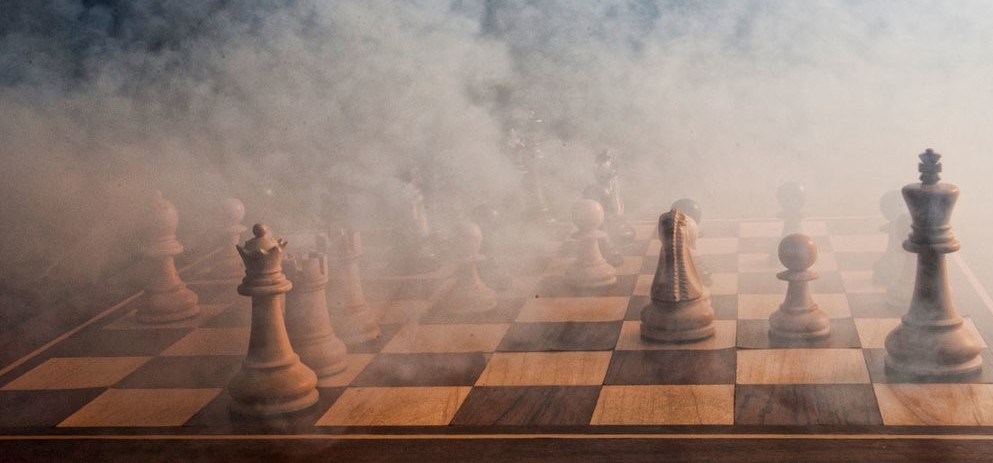


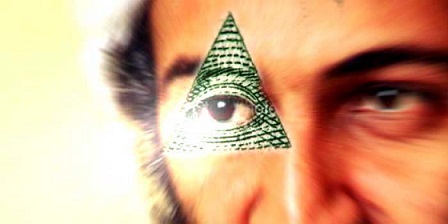

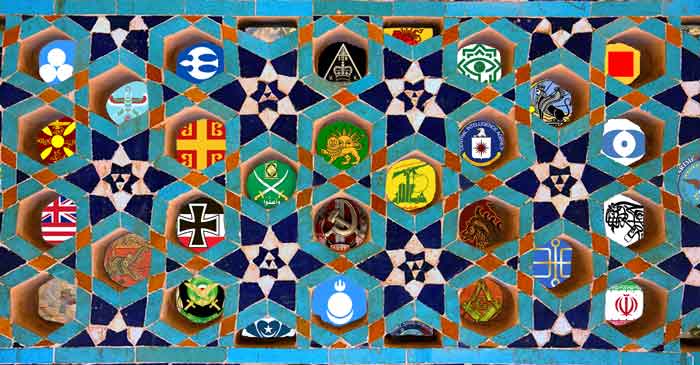
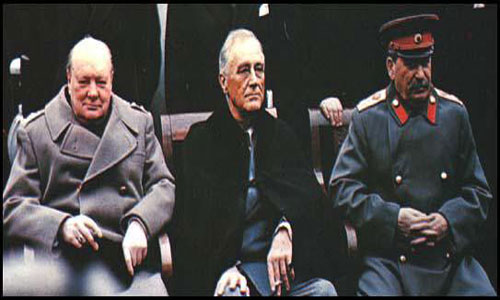


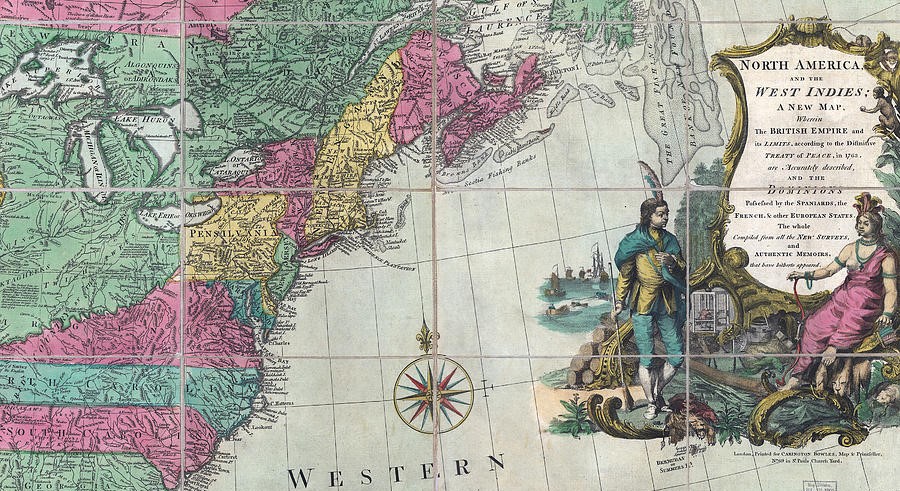
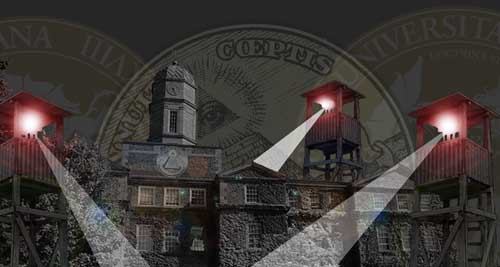
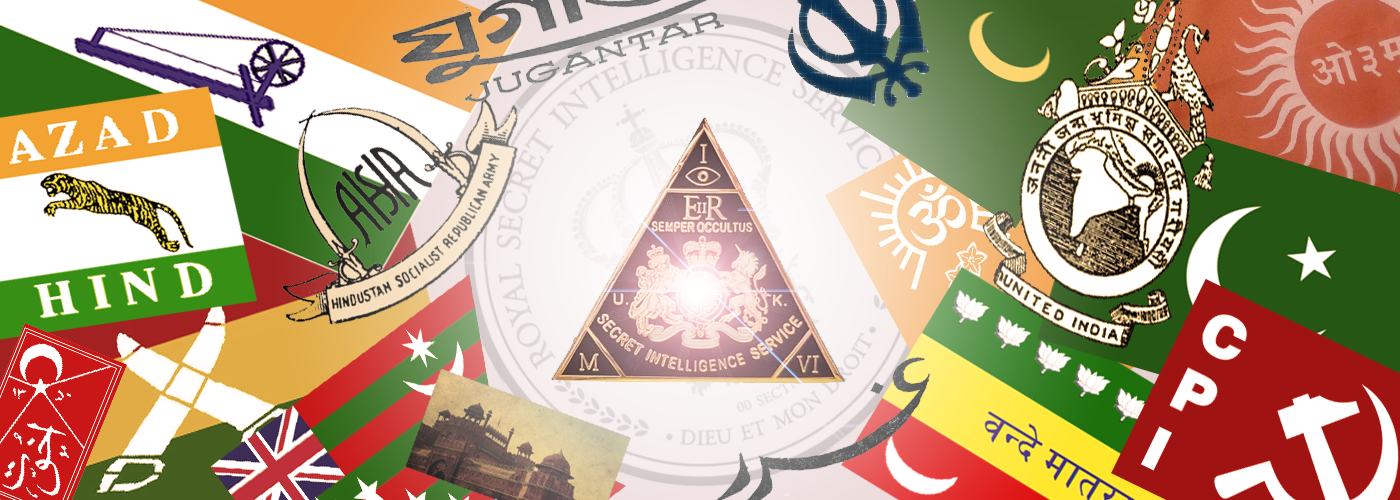
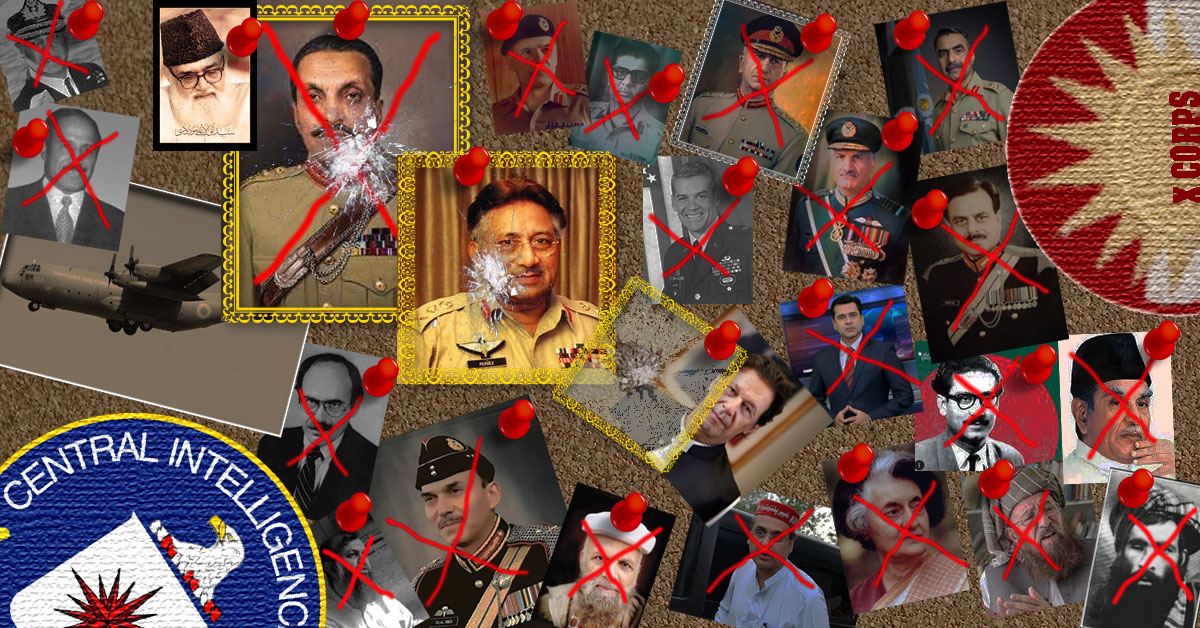

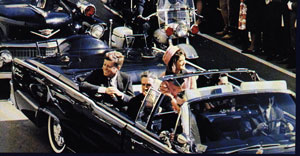

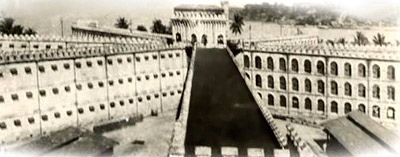

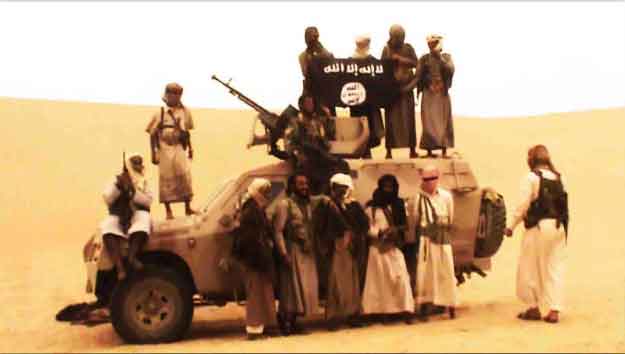
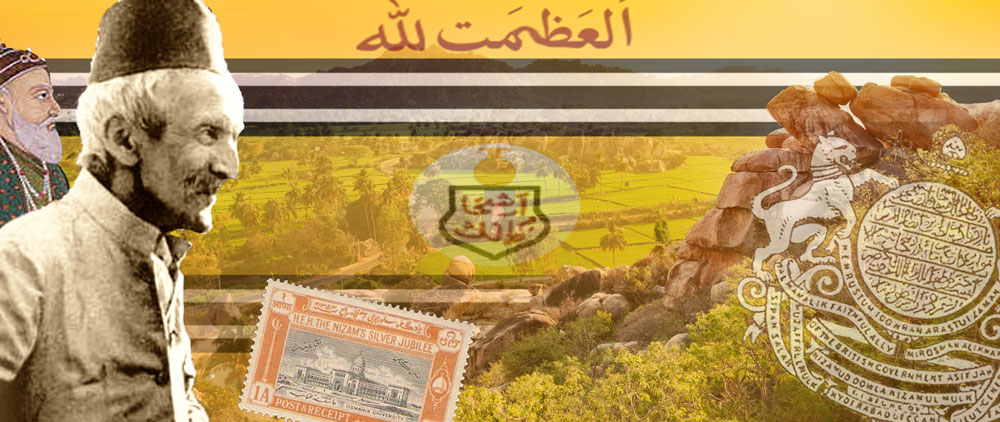






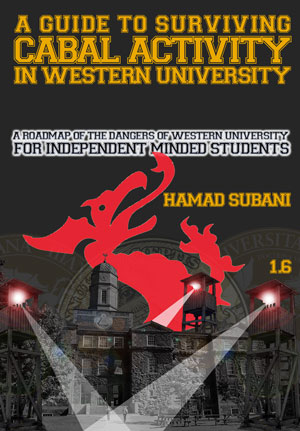
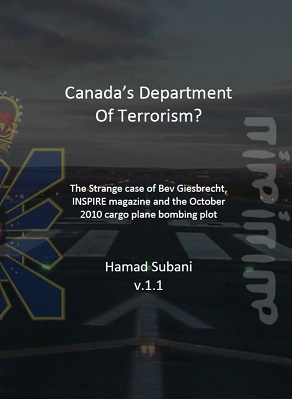
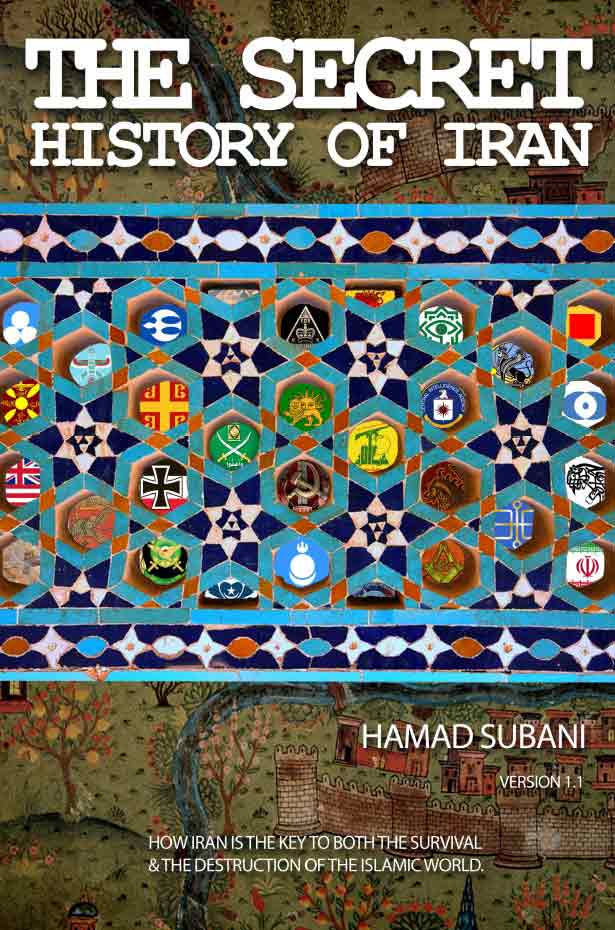
The First Freemason Lodge in India was not at the Gosha Mahal Baradari Hyderabad. It was a grand building built by teh Last Qutub Shahi ruler Tana Shah in 1682 and was donated to teh freemason by Nizam in 1872.
The first lodge was established for the British Military and other authorities in India in 1728 at Fort William Calcutta called Star of the East.
The doors of freemason were opened for Indians in 1775, when Nawab Umdatul Umra of Carnatic opened first lodge in Trichonopoly, in South India.
Please refer Freemasonry in India
https://linfordresearch.info/fordownload/World%20of%20Fmy/Nairn%20India.pdf
Shoukat Ali Khan Hyderabad India
Thanks for this.
The grave of Aurangzeb is in the premises of a Dargah in Khuldabad near aurangabad. there is no tomb over it nor even a structure.
Taj Mahal like structure is in aurangabad, whichis around ten miles away from his grave.
So what you have mentioned about his grave is not correct.
Thank you for the clarification. The Taj Mahal like structure is actually the tomb of his wife. I have corrected.
Gosh !!! what an intellectual article . Very first time I got to read something eloborative on Shah Waliulllah and the reason of his invitation to Abdali. You are incredibly remarkable in presenting the profoundness and minute details on the subject. Are you a historian or have you written any books.
Share your articles or suggest some books on historical India from Muslim rulers point of view. Had enough of Aurangazeb bashing and Muslim rule criticism nowadays around. So was wondering the justification from the other side.
Please do share.
You could take a look at my book The Secret History of Iran. Since the history of medieval Iran is linked to that of India, it does contain a lot of previously undisclosed information on the Mughals and other Indian dynasties as well.
Qasim Rizvi did not escape , he did his prison term and was relocated to Pakistan by the Indian government . I find lots of unsubstantiated facts in your write up.
This is not the official history of Hyderabad State, it is the Conspiracy History of Hyderabad State, where we try to fill in the blanks in the official narrative. Its not for everybody. Do you really think Qasim Rizvi would be let go so leniently?
Hi, certainly, history of Hyderabad is enticing. I have come across a novel “Theft of Nizam’s Gold” by a writer from Hyderabad, Naser Banaqeeb who presented the life of Nizam in a wonderful way. The novel is a gripping tale of bygone era of Nizam, love and mystery of the gold stolen – the history doesn’t have any record of it. Yes, the gold stolen from Nizam’s treasure has no mentioning in any books. But, the author described the same in an artistic manner. The novel is available online at amazon.
Dear Abraiz Ali Khan,
I am based in Mumbai and an avid reader of “authentic” historical books.
I would be much obliged if you could share with me any such books in your possession, including “Tragedy of Hyderabad”.
My contact details are: iyerpnpl@gmail.com
Warm regards,
Arvind Iyer
Hello Mr. Arvind. This is the book I have mentioned: https://www.goodreads.com/book/show/18360701-tragedy-of-hyderabad
I found it in a Sunday, second-hand book market. Currently, this book is with my brother who lives in Canada. Sorry for not being able to share it.
Dear Mr. Abraiz,
I have a nephew in Canada whom I will be meeting at a family function in October. If you can share with me the contact details of your brother in Canada, my nephew can coordinate with him and photocopy the book and hand it over to me when we meet.
Incidentally I am in Hyderabad on Monday June 25th. I would be very happy to meet with you.
Once again my email id is: iyerpnpl@gmail.com
Warm Regards,
Arvind Iyer
Pl visit Haziq and Mohi a book store near Charminar , they have copies . Picked up my copy of Tragedy of Hyderabad and other books on hyderabad from there . The store finds a mention in The Last Nizam by Jhon Zubrcki and is regularly frequented by history buffs , most notable being William Dalrymple , he has given a beautiful account in The White Mughals of William Kirkpatrick the British resident during the end of the 18th century and his affair with Khai un Nissa great niece of Aristu Jah the prime minister at Nizam Ali Khan’s court . He eventually ended up marrying her and converted to Islam . Most of his research work was carried out by literature provided by Haziq and Mohi .
Hello Mr Iyer , you can get the book and many other out of publication books on Hyderabad at Haziq and Mohi book store near Charminar . The store finds a mention in the Last Nizam by Jhon Zubrycki and is frequented by history buffs from India and abroad , most notable being William Darlymple whose book The White mughals revolves around the stories of William Kirkpatrick the british resident at the end of 18th century in Hyderbad and his affair with Khai un Nisa the great niece of Aristu Jah the prime minister of Nizam Ali Khan , which he later marries and converts to Islam .
You may also be interested in The Destruction of Hyderabad by Abdul Gafoor Abdul Majeed Noorani. No idea where to find it though.
Its overwhelming to read this..present day hyderabadis are so ignorant about their past. . I wish many of them could read this
Assalaamualaikum. I am a citizen of Hyderabad itself. Born and brought up here. I do have an interest in our history as well. You have written a very engaging piece of research. Do accept congratulations for it. As it happens, there are a few points that I do disagree with. One is your saying that venerating graves is an “Islamically abhorrent practice.” But maybe you subscribe to one of those sects that see graves as idols, so let it pass. I don’t need to tell you that scholars have compiled voluminous works on this subject. Read them if you will.
The other point that raises my hackles is the flippant description of Jamia Nizamia. As it happens, I am closely related to this institution. All my teachers of Islamic sciences have studied at this institution. Your description of it stems of ignorance or, if you will excuse me for saying so, your prejudice against those venerate graves. Jamia Nizamia was started in 1876 AD. Its founder, who was the teacher (Ataleeq as they called them then) of the 6th and 7th Nizams, passed away in 1917. If you would look into the history of Jamia Nizamia and its scholars, you would see many un-Islamic activities and trends being checked by them. Keep in mind that it was a nascent institution without any power of enforcement. Which means that Jamia Nizamia could only tell that something was wrong and must be stopped, but could not actually go out and stop them. Frankly, there are many firsts the credit of whom goes to Jamia Nizamia and more specifically its founder, Imam Anwarullah Farooqui (May Allah shower His Mercy on him). Hyderabad was the only state to have departments of Qazaath – where marriages, divorces, etc. were registered, the only state to outlaw reprehensible Hindu customs like Murli, etc., the only state to have standardized weights, possibly the only state or one of the very few which trained people with a standardized syllabus to administer basic Islamic laws to the populace. The State Central Library (earlier known as Asafjahi Library) was established at the behest of Shaykh Anwaarullah. No, they were nor politically active. As I said, it was a nascent institution, just started. Maybe in time, if Hyderabad state would have been there, they would have played a greater role.
The best part about your piece is that you give sources. I do have some of the books like Tragedy of Hyderabad with me. I will surely read up as much as I can the source books that you quote and see your point of view in much broader and richer detail.
Best of luck for your future research.
Assalaamualaikum.
Thank you for the additional info on Jamia Nizamia. While I do accept that Jamia Nizamia did in fact play a positive role, I believe that the fact that it was an official institution limited and hindered its ability to fulfill its role in a more wholesome manner. For example, they could not critic the sponsorship and inclusion of Shiite practices of later Nizams. And by and large, they did fail to enlighten the Muslim population, as evidenced by the level of ignorance and the incorporation of non-Islamic practices into Islam by the common people. If The Powers That Be were serious about Islam, they would have supported it more thoroughly, perhaps with a budget much bigger than the war aid they gave to Britain. As you mentioned, they started doing so, but it was too little, and too late.
In Islamic history, Muslim groups attain political power only when they start imposing and reinstating the natural order of things. Otherwise nature overcomes them. Towards the end, the Nizams began failing to maintain their holistic connection to the Mystery Saint.
Dude you are awesome. Where you been?
Do you have any recommendation for occult conspiracy sites with muslim perspective?
The main reason why it’s so hard to find this is the cultural lag muslim readers annnd writers have due to the ravages of colonialism westernization and the like. In the world that emerged after ww2 seems the only ticket for indians and muslims to prosper in the west was the sci/tech route. So as a fractured bordered nation, there was not much literal development.
For example most muslims i know go as far as saying 911 was ‘possibly’ a conspiracy and that Kanye or whoever is a free mason, and that’s as far as it goes. They will never include the saudis or big banks or the company they work for.
Anyway look forward to reading your next masterpiece.
The only “Islamic” Conspiracy website that I find worth a mention is that of David Livingstone> http://www.conspiracyschool.com/